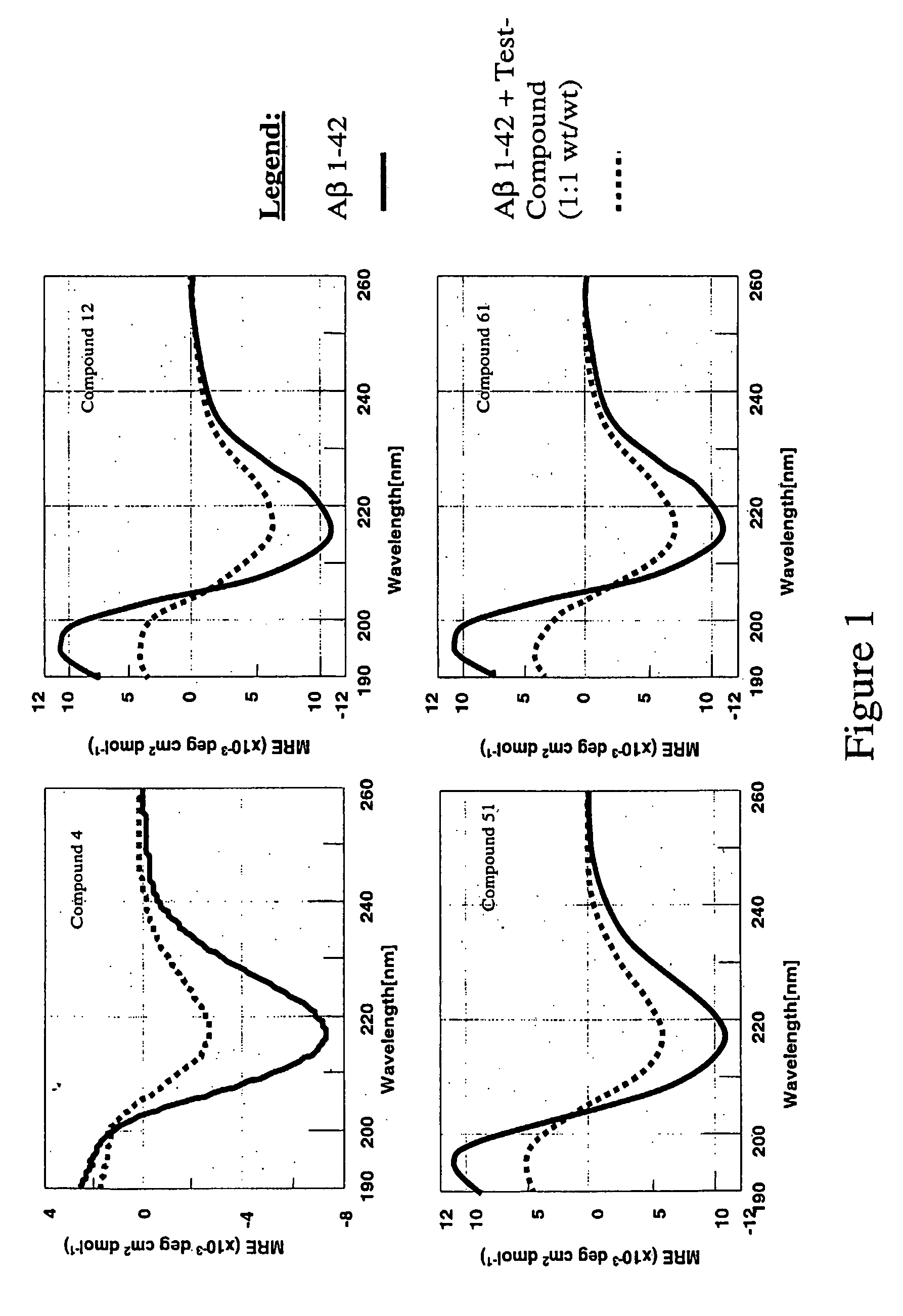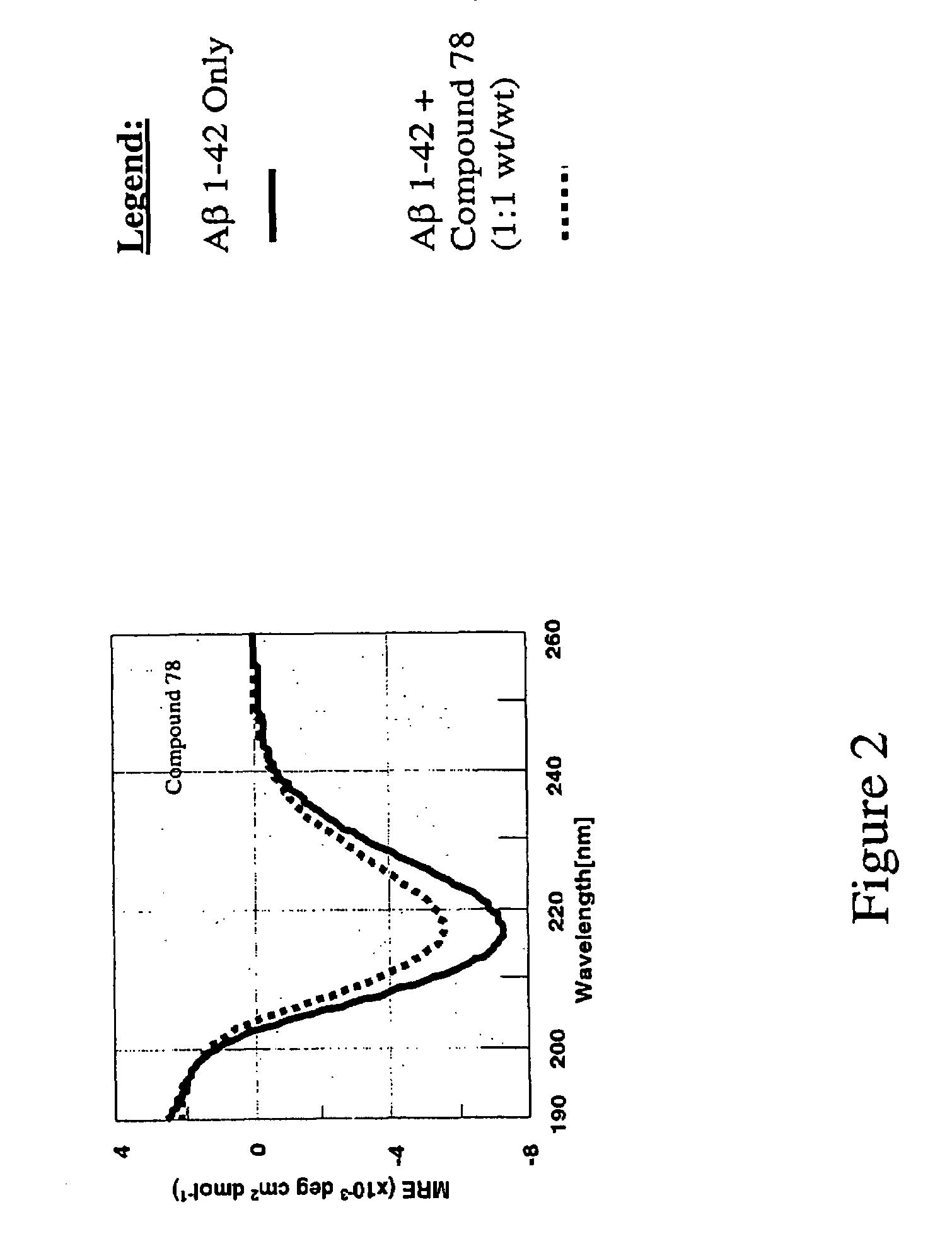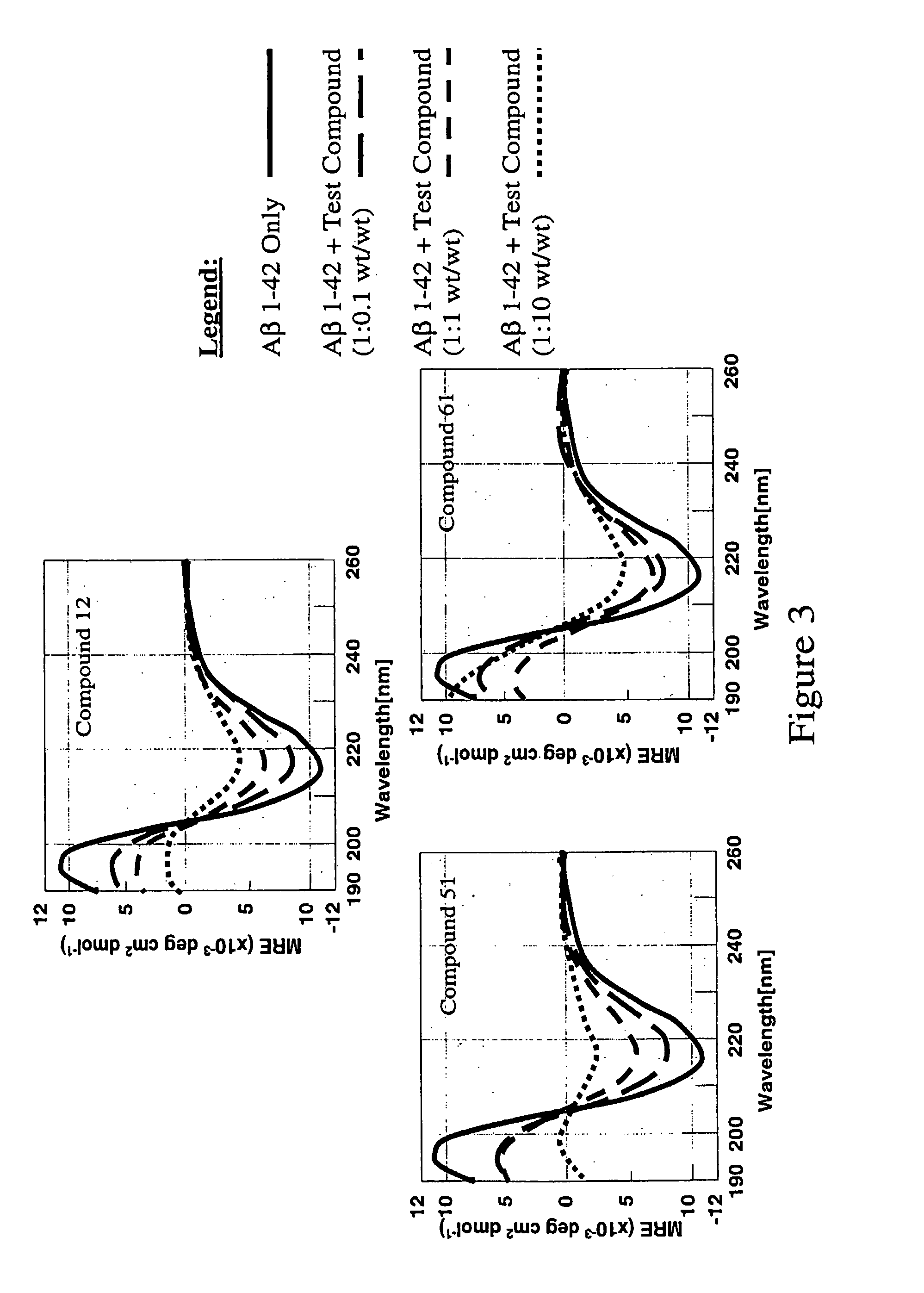Compounds, compositions and methods for the treatment of amyloid diseases such as systemic AA amyloidosis
a technology of amyloid disease and compound, applied in the field of compound, composition and method for the treatment of amyloid disease such as systemic aa amyloidosis, can solve the problems of kidney failure, heart failure, and amyloid deposition being detrimental to the patient,
- Summary
- Abstract
- Description
- Claims
- Application Information
AI Technical Summary
Problems solved by technology
Method used
Image
Examples
example 1
3,4,3′,4′-Tetrahydroxybenzoin (Compound 1; DC-0001) Bis(3,4-methylenedioxy)benzoin (compound 1B; DC-0001B)
[0155]
[0156]A solution of piperonal (5 g) in ethanol (6.5 ml) was treated with a solution of potassium cyanide (0.5 g) in water (5 ml), then refluxed for 5 h. The resultant precipitate was filtered off, washed with water then crystallized from ethanol to give DC-0001B (2.24 g, 45%) as an off white crystalline solid.
[0157]1H-NMR(CDCl3) 7.52 (1H, dd, J 2, 8 Hz), 7.39 (1H, d, J 2 Hz), 6.73-6.82 (4H, m), 6.02 (2H, s), 5.91 (2H, m), 5.76 (1H, d, J 6 Hz) and 4.51 (1H, d, J 6 Hz).
[0158]M / z 287 ((M−CH)−, 100%).
[0159]
Bis(3,4-methylenedioxy)benzil
[0160]A mixture of copper acetate (20 mg), ammonium nitrate (660 mg) and DC-0001B (2 g) in aq. acetic acid (80%, 10 ml) were refluxed together for 90 minutes. The mixture was cooled then poured into water (100 ml) and the product extracted into ethyl acetate (2×100 ml), dried and evaporated in vacuo to give a yellow gum. Trituration from ethanol ...
example 2
3,4,3′,4′-Tetrahydroxydiphenylmethane (compound 3; DC-0003)
[0171]
Bis (3,4-methylenedioxyphenyl)methanol
[0172]To a solution of piperonal (0.75 g) in solution in dichloromethane (25 ml) was added dropwise 3,4-(methylenedioxy)phenylmagnesium bromide (5 ml, 1M solution in toluene / THF). The mixture was stirred at room temperature overnight, then poured onto water, extracted with dichloromethane, dried and evaporated in vacuo to give the crude alcohol as a brown gum. Purification by column chromatography over silica gel eluting with ethyl acetate in CH2Cl2 (10 to 20%) gave the pure alcohol as a white gum (1.18 g, 87%).
[0173]1H-NMR (CDCl3) 6.7-6.8 (6H, m), 5.93 (4H, s), 5.66 (1H, bs) and 2.18 (bs).
Bis(3,4-methylenedioxyphenyl)methane (compound 3B; DC-0003B)
[0174]A solution of the alcohol (2.61 g) in methanol (25 ml) / tetrahydrofuran (30 ml) was shaken with Pd(OH)2 / C (20%, 100 mg) under an atmosphere of hydrogen for 12 hours. The mixture was filtered through Celite, then the solvents removed...
example 3
1,2-bis(3,4-dihydroxyphenyl)ethane (compound 4; DC-0004)
[0181]
1,2-bis-(3,4-dihydroxyphenyl)ethane (compound 4; DC-0004)
[0182]A solution of the tetrahydroxybenzil (see Example 1) (70 mg) in methanol (10 ml) with palladium hydroxide on carbon (20%, 10 mg) was stirred under an atmosphere of hydrogen for 2 hours. The mixture was filtered through Celite, and the solvents removed in vacuo to give an orange gum. Separation by column chromatography over silica gel eluting with 20% ethyl acetate in dichloromethane gave DC-0004 as an off white gum (43 g, 68%).
[0183]1H-NMR ((CD3)2CO) 7.73 (4H, bs), 6.80 (2H, d, J 8 Hz), 6.79 (2H, d, J 2 Hz), 6.62 (2H, dd, J 2, 8 Hz) and 2.79 (4H, s).
[0184]M / z 245 ((M−H)+, 100%).
[0185]HPLC (Method 2) 31.7 minutes.
PUM
| Property | Measurement | Unit |
|---|---|---|
| body weight | aaaaa | aaaaa |
| body weight | aaaaa | aaaaa |
| body weight | aaaaa | aaaaa |
Abstract
Description
Claims
Application Information
 Login to View More
Login to View More - R&D
- Intellectual Property
- Life Sciences
- Materials
- Tech Scout
- Unparalleled Data Quality
- Higher Quality Content
- 60% Fewer Hallucinations
Browse by: Latest US Patents, China's latest patents, Technical Efficacy Thesaurus, Application Domain, Technology Topic, Popular Technical Reports.
© 2025 PatSnap. All rights reserved.Legal|Privacy policy|Modern Slavery Act Transparency Statement|Sitemap|About US| Contact US: help@patsnap.com



